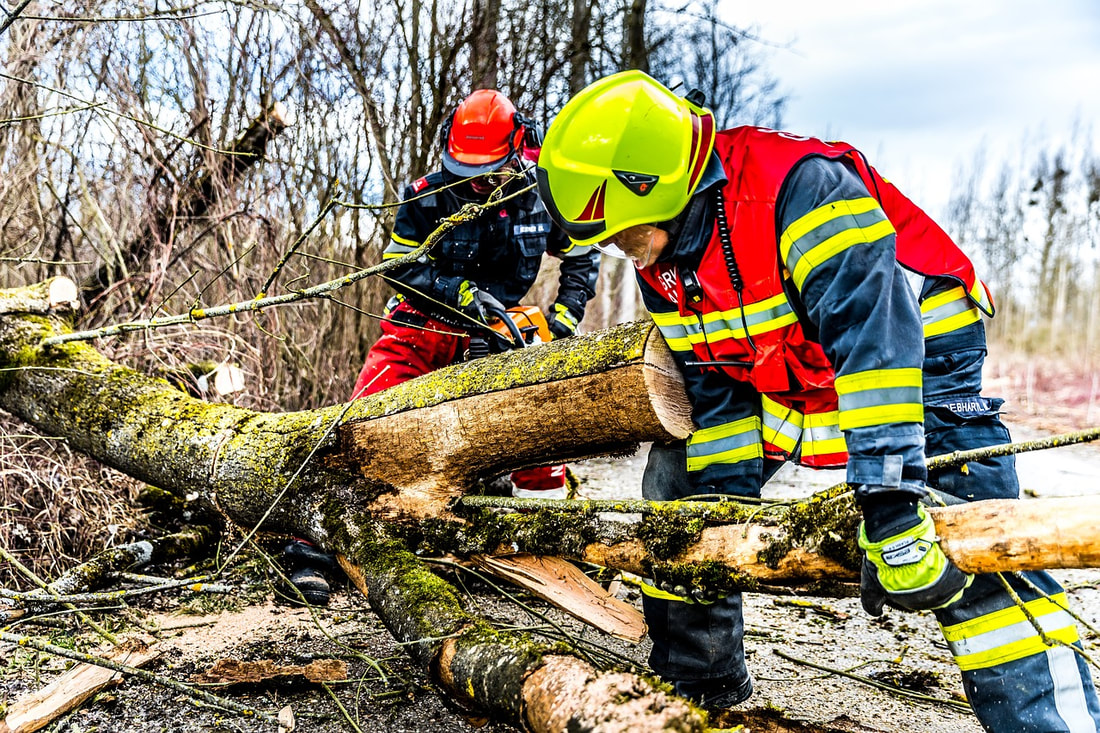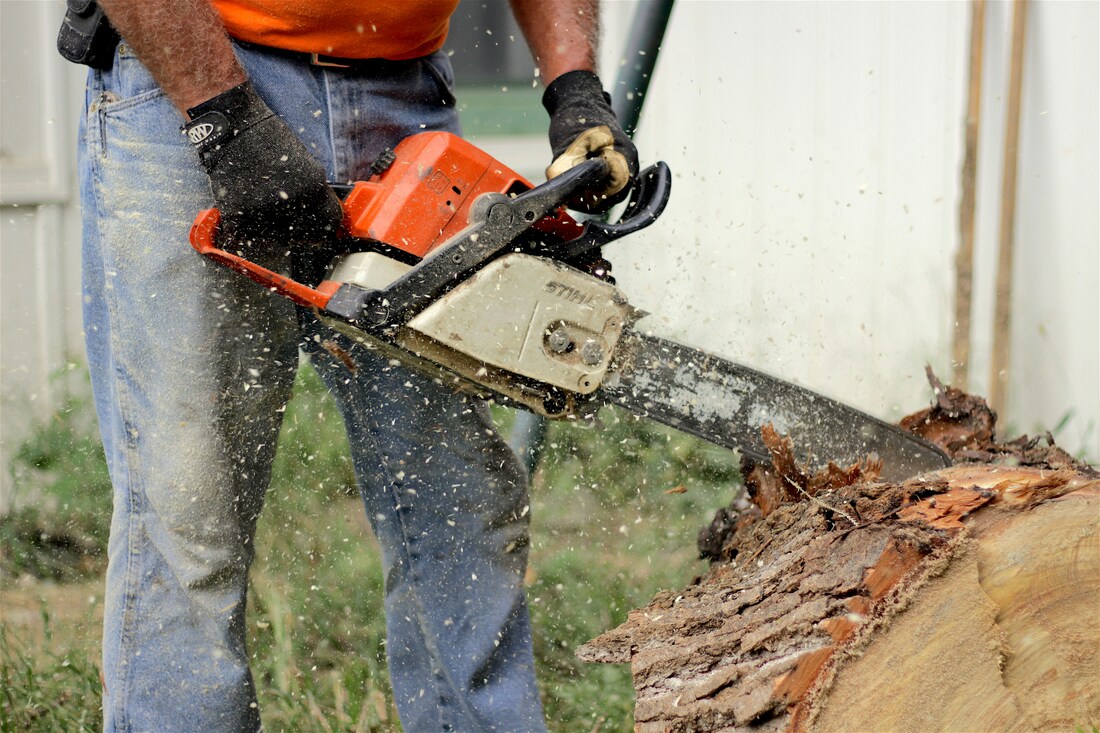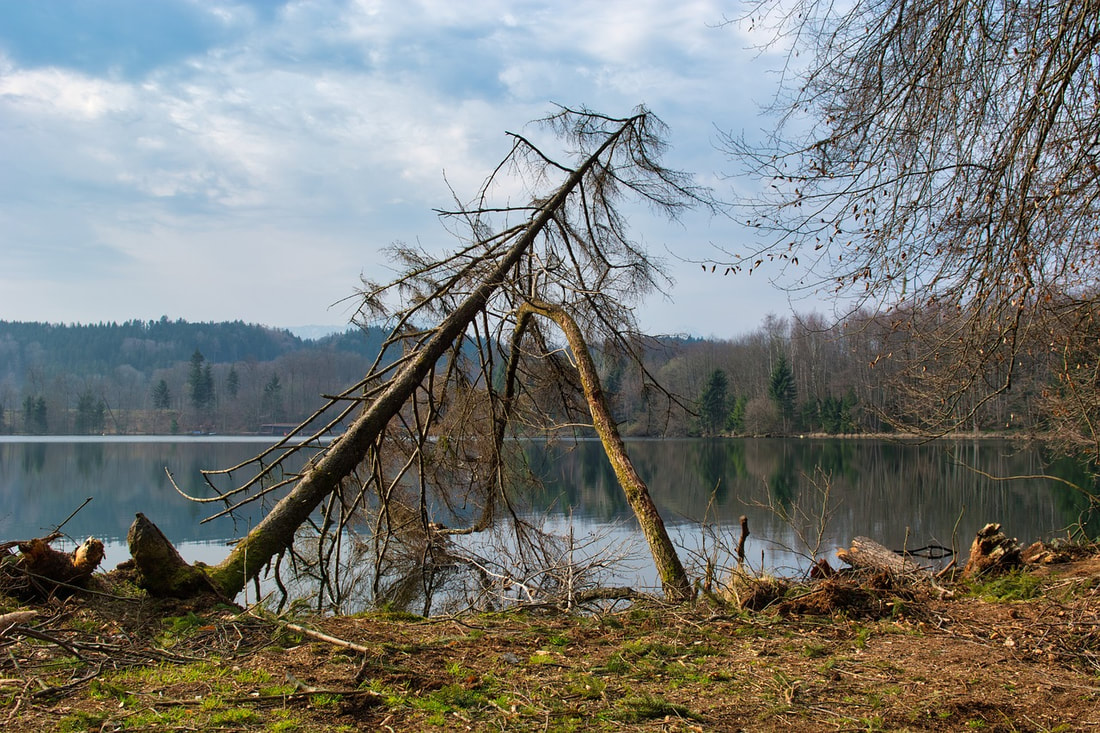Tree Removal Services in Anderson, SC |
|
Looking to cut down a tree or remove one felled from a storm? Our team of proffessional arborists are happy to come down and help remove the trees from yuor property. Serving the Anderson, SC area, we'll come in and remove your tree quickly and safely, to minize any potentail damage to people or property. We'll remove the trees, roots and all to ensure that your landscape returns to normal after the tree is gone.
Whether a storm knocked your trees down, or your tree has finally fallen to disease and rot, we'll help remove any trees from your property in a fast, safe way. We've been serving the Goose Creek, SC area for a long time, and have regularly helped clear away trees that have fallen or partially fallen, root and all. Ready to remove a tree? Give us a call at (864) 712-3826 for a quote. Feel free to ask us about any special requests, and we will do what we can to accommodate you. Service HighlightsOur tree removal services are aimed at efficiently and quickly removing trees from your property.
Here's the steps we take when you choose to use us as your tree removal contractors. Tree Exam
|
|
What is Tree Removal?Tree removal is the process of cutting down and removing a tree from its location, typically due to safety concerns, space constraints, or the tree's poor health. Professional arborists or tree removal specialists utilize specialized equipment and techniques to safely dismantle trees, ensuring minimal damage to surrounding property and structures. The process begins with a thorough assessment of the tree's condition and the surrounding environment to develop a safe and efficient removal plan. Depending on factors such as tree size, location, and accessibility, various methods may be employed, including climbing, rigging, or the use of cranes or bucket trucks.
During tree removal, trained professionals carefully cut down the tree in sections, starting from the top and working their way down to the base. Proper rigging and lowering techniques are used to control the descent of tree sections, minimizing the risk of damage to nearby structures or landscaping features. Once the tree is safely removed, the debris is typically processed and hauled away, leaving the area clean and free of obstructions. Tree removal is often necessary to eliminate safety hazards, create space for construction or landscaping projects, or remove diseased or dead trees that pose a risk to surrounding vegetation. Hiring a professional tree removal service ensures that the process is carried out safely and efficiently, protecting both property and personnel from potential risks.
|
Why is Tree Removal Important?Tree removal is important for several reasons, primarily for safety purposes. Trees that are diseased, damaged, or structurally compromised pose significant safety hazards, especially during storms or high winds. Dead or decaying trees can shed branches or topple over unexpectedly, causing property damage, personal injury, or even loss of life. Additionally, trees that are growing too close to buildings, power lines, or other structures may pose a risk of damage if they fall or drop branches. Removing hazardous trees eliminates these safety risks, protecting property and ensuring the safety of individuals in the vicinity.
Furthermore, tree removal is important for maintaining the health and vitality of the surrounding landscape. Diseased or infested trees can spread pests or diseases to neighboring trees, jeopardizing the health of the entire ecosystem. Removing diseased trees prevents the spread of pathogens and helps preserve the overall health of the landscape. Additionally, removing overcrowded or poorly located trees can improve sunlight penetration and airflow, promoting the growth and development of remaining vegetation. By strategically removing trees when necessary, property owners can enhance the aesthetics, functionality, and long-term sustainability of their landscape.
|
Signs my tree needs to be removedSometimes the signs are obvious, but recognizing that it's time to cut down a tree is crucial for maintaining safety and preserving the health of the surrounding landscape. One of the most apparent indicators is extensive decay or damage within the tree trunk or major branches. Visible signs of decay include hollowed-out areas, large cracks, or missing bark, indicating structural compromise and weakening of the tree's integrity. Such damage significantly increases the risk of limb failure or tree collapse, posing a serious safety hazard to nearby structures, vehicles, or individuals.
Severe pest infestations or diseases is another big reason for tree removal. Trees exhibiting visible signs of insect activity, like boreholes, sawdust-like frass, or webbing, along with symptoms of diseases such as leaf discoloration or wilting, may need to be removed to prevent the spread of pathogens to other trees in the vicinity. In some instances, trees affected by pests or diseases may be beyond recovery, making removal essential to safeguard the health of the surrounding landscape and prevent further damage. |
After a big storm in Anderson, trees that have suffered substantial storm damage or are leaning severely due to wind or soil erosion may warrant removal to mitigate safety risks. Leaning trees can indicate root instability or structural weaknesses, increasing the likelihood of uprooting or toppling during adverse weather conditions. Regular monitoring of trees following storms or severe weather events is crucial, and prompt action should be taken to address signs of structural damage or instability, preventing potential property damage or personal injury.
Finally, trees that pose an obstruction to utility lines, roadways, or property structures may need to be removed to ensure safety and prevent damage. Overgrown branches or trees growing too close to power lines pose a risk of electrical hazards or service disruptions, while trees obstructing roadways or driveways can impede traffic flow and pose a hazard to motorists. Property owners should assess the placement of trees on their property and consider removing those that pose obstructions to ensure safety and prevent potential accidents or property damage. |







